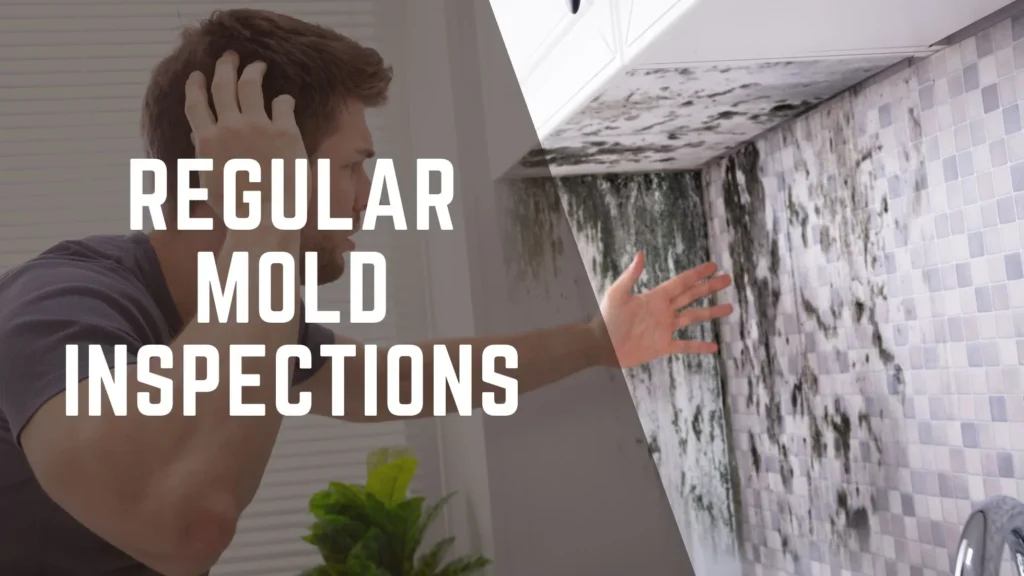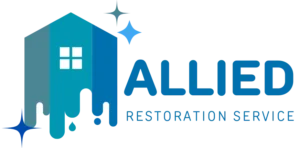
As a homeowner, it is crucial to understand the potential dangers that mold can pose to your home and your health. Mold is a type of fungi that thrives in damp and humid environments. It can grow on various surfaces, such as walls, ceilings, carpets, and even furniture. Mold spores are microscopic and can easily become airborne, leading to respiratory issues and other health problems when inhaled.
Mold can cause structural damage to your home as well. It feeds on organic materials, including wood and drywall, weakening the structure over time. This can lead to costly repairs and compromises the safety of your home. Therefore, it is essential to be proactive in preventing mold growth and conducting regular mold inspections.
The importance of regular mold inspections
Regular mold inspections are a crucial part of maintaining a healthy and safe home environment. Mold growth is often hidden and can go unnoticed for extended periods, making it difficult to address the issue in its early stages. By conducting regular mold inspections, you can detect mold growth before it becomes a more significant problem.
During a mold inspection, a trained professional will thoroughly assess your home for any signs of mold growth. They will inspect areas prone to moisture, such as bathrooms, basements, and crawl spaces. By identifying potential problem areas, you can take immediate action to prevent mold growth and protect your home.
Signs that indicate you may have a mold problem
While regular mold inspections are essential, it is also crucial to be aware of the signs that may indicate a mold problem in your home. Some common signs of mold growth include:
- Visible mold: If you notice any green, black, or white patches on surfaces, it is likely mold.
- Musty odor: Mold often produces a distinct musty smell. If you notice an unpleasant odor in your home, it could be a sign of mold growth.
- Water damage: Any areas in your home that have experienced water damage, such as leaks or flooding, are susceptible to mold growth.
- Allergic reactions: If you or your family members experience unexplained allergic symptoms, such as sneezing, coughing, or watery eyes, it could be due to mold exposure.
If you observe any of these signs, it is vital to take immediate action and schedule a professional mold inspection to assess the extent of the problem.
The health risks associated with mold exposure
Exposure to mold can have severe health consequences, particularly for individuals with allergies or respiratory conditions. When mold spores are inhaled, they can trigger allergic reactions, including sneezing, coughing, and skin rashes. In more severe cases, mold exposure can lead to respiratory problems, such as asthma attacks and bronchitis.
Mold can also produce mycotoxins, which are toxic substances that can cause various health issues. Prolonged exposure to mycotoxins can lead to neurological problems, immune system disorders, and even cancer in extreme cases.
Children, the elderly, and individuals with weakened immune systems are particularly vulnerable to the health risks associated with mold exposure. Therefore, it is crucial to prioritize regular mold inspections and take the necessary steps to prevent mold growth in your home.
How mold inspections are conducted
Mold inspections are typically conducted by trained professionals who have the knowledge and expertise to identify and assess mold growth. The inspection process involves a comprehensive assessment of your home, focusing on areas prone to moisture and mold growth.
During the inspection, the professional will visually inspect all areas of your home, including hidden spaces such as crawl spaces and attics. They will also use moisture meters and thermal imaging cameras to identify any areas of excessive moisture that may indicate mold growth.
In some cases, the inspector may collect samples for laboratory testing to determine the type and concentration of mold present in your home. This information can help in developing an effective remediation plan if mold growth is detected.
The benefits of proactive mold prevention
Prevention is always better than cure, especially when it comes to mold. Taking proactive measures to prevent mold growth in your home can save you from the hassle and expense of dealing with a full-blown mold problem. Here are some benefits of proactive mold prevention:
- Protecting your health: By preventing mold growth, you reduce the risk of respiratory issues and other health problems associated with mold exposure.
- Preserving your home’s value: Mold can cause significant damage to your home’s structure and aesthetics. By preventing mold growth, you preserve the value and integrity of your property.
- Saving money: Mold remediation can be costly, especially if the problem is extensive. By preventing mold growth, you avoid the need for expensive repairs and restoration work.
DIY mold inspections vs. professional mold inspections
While it is possible to conduct a basic DIY mold inspection, it is highly recommended to hire a professional for a thorough and accurate assessment. Here are some key differences between DIY mold inspections and professional mold inspections:
DIY mold inspections
- Limited knowledge and expertise in mold detection and assessment.
- Basic visual inspection without the use of specialized tools and equipment.
- May miss hidden mold growth and fail to identify the root cause of the problem.
- Lack of professional certification and may not provide accurate results.
Professional mold inspections
- Trained professionals like Allied Carpet And Floor Restoration in Sioux City, IA, with extensive knowledge and experience in mold detection and assessment.
- Utilize specialized tools and equipment, such as moisture meters and thermal imaging cameras, for a comprehensive inspection.
- Can identify hidden mold growth and determine the source of moisture, allowing for effective remediation.
- Certified professionals provide accurate results and recommendations for mold prevention and remediation.
Hiring a professional mold inspector
When it comes to the health and safety of your home, it is crucial to hire a professional mold inspector who has the necessary qualifications and expertise. Here are some factors to consider when hiring a professional mold inspector:
- Certification and experience: Look for a mold inspector who is certified by a reputable organization and has substantial experience in the field.
- Reputation and references: Research the inspector’s reputation and read customer reviews. Ask for references and contact previous clients to ensure their satisfaction.
- Comprehensive inspection services: Ensure that the mold inspector offers a thorough inspection, including visual assessment, moisture testing, and if necessary, laboratory analysis.
- Clear and detailed reporting: A professional mold inspector should provide a comprehensive report detailing their findings, including any mold growth, the extent of the problem, and recommendations for remediation.
By hiring a qualified professional, you can have peace of mind knowing that your home will be thoroughly inspected, and any potential mold issues will be addressed effectively.
Mold remediation and prevention tips
If mold growth is detected during a mold inspection, it is crucial to take immediate action to prevent further damage and protect your health. Here are some mold remediation and prevention tips:
- Address the source of moisture: Mold thrives in damp environments, so it is essential to identify and fix any sources of moisture, such as leaks or condensation issues.
- Remove affected materials: If mold growth is extensive, it may be necessary to remove and replace affected materials, such as drywall or carpeting. Proper containment and disposal procedures should be followed to prevent cross-contamination.
- Clean and disinfect: Non-porous surfaces can be cleaned and disinfected using specialized mold cleaners or a mixture of bleach and water. However, it is crucial to follow safety guidelines and wear protective gear when dealing with mold.
- Improve ventilation: Proper ventilation helps to reduce moisture levels and prevent mold growth. Ensure that bathrooms, kitchens, and other high-moisture areas have adequate ventilation, such as exhaust fans or opening windows.
- Monitor humidity levels: Use a hygrometer to monitor humidity levels in your home. Ideally, humidity should be kept below 50% to discourage mold growth.
- Regular cleaning and maintenance: Regularly clean and inspect areas prone to moisture, such as bathrooms and basements. Promptly address any signs of leaks or water damage.
Conclusion
Regular mold inspections are a crucial part of protecting the health and safety of your home. By understanding the impact of mold, recognizing the signs of mold growth, and conducting regular inspections, you can take proactive measures to prevent mold-related issues.
Whether you choose to hire a professional mold inspector or conduct a DIY inspection, it is essential to address any mold growth promptly and effectively. By taking control of your home’s health, you can ensure a safe and comfortable living environment for you and your family.
Don’t wait until mold becomes a significant problem. Schedule a mold inspection today and take the necessary steps to protect your home from the harmful effects of mold. Your home and your health are worth it.


